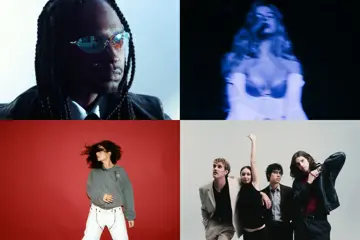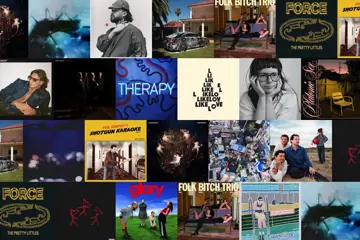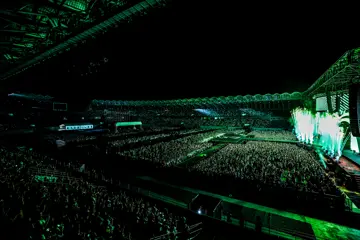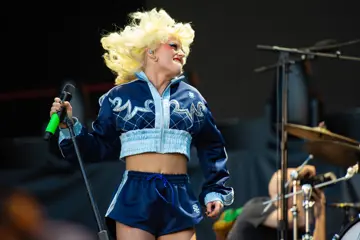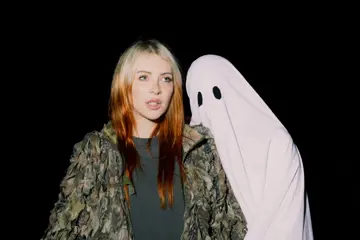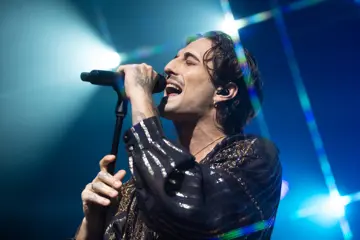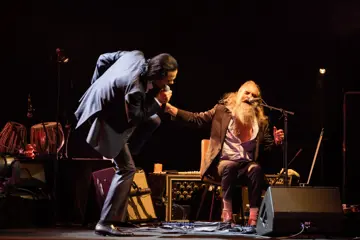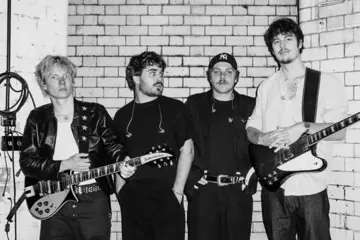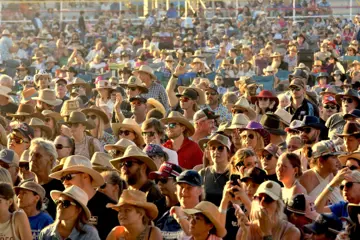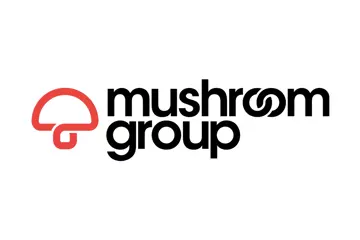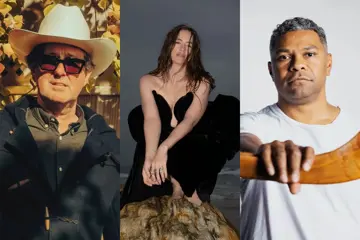What would we do without music photographers?
Hendrix lighting up his Strat at Monterey, The Man In Black flipping the bird at San Quentin, Paul Simonon swinging his bass into The Palladium's stage - there are countless images that have shaped the way we see music, all thanks to people bunkered down front and centre at every gig, ducking headbangers, half-empty beers and surly security for the chance capture something unforgettable.
Not that you need to go all the way to Monterey for an iconic moment. Australia has one of the most celebrated live music scenes in the world, and Melbourne photographer Monique Pizzica has been up on the front line here for half a decade now, shooting live gigs around town for a string of music companies and publications, including The Music. During that time she's covered everyone from up-and-coming hip hop artists like Daniel Elia to venerated rockers like Darren Middleton and Jet.
Documenting that period, Pizzica has now released After Hours - a photo journal that offers a loving look at Australia's stages and the community that lives on them.
We spoke her about how she developed her distinct style, discovering new music from the pit, and her deep-seated trust in Tyra Banks.
Tell us about yourself. Where’d you get started? What drew you to music photography in particular?
So I did the whole study film thing for three years and really loved the practical side it - editing, filming and obviously photography. It wasn’t until my sister saw that Tram Sessions were looking for volunteers where I decided, 'Eh, why not use the skills I learnt at uni and dive into something more music-related.' I’ve always loved watching live music, and learnt how to play the piano back in the day, so music has always been a huge part of my life anyway! As soon as I started with Tram Sessions I knew I had a passion for music photography and videography and wanted to see how far I could get with it.
How badly are you missing gigs right about now?
So, so bad! I usually discover new music and artists when I go out to see or photograph a random show, so I’ve been finding myself listening to the same playlist over and over and have no idea what else to listen to. I just really miss picking up my camera, getting to a venue and experiencing some live music. I’ve been photographing other random things the past couple of months but there’s nothing like the spontaneity of shooting live music. Really can’t wait until we can get back out there.
How long have you been working on After Hours?
After Hours has been a little passion project that I’ve slowly been chipping away at since 2018. I was chatting about the idea of a book with friends for years but always thought I didn’t have enough time for something like this. One particular mate pretty much forced me to start working on the idea without having any timeline, no pressure to finish it even, just to see what would happen. Turns out I really enjoyed the process and got it finished.
Do you have a personal favourite in there?
I’ve got a couple of shots in there of Client Liaison and Jet which are probably my favourite shots of all time. The one of Client Liaison was so good because I thought I missed the shot! I remember being so bummed that I missed it and did the whole 'Oh well, there’s always next time,' to make myself feel a bit better. When I went home to edit I saw the shot and I legit jumped out of my seat I was so happy I got it.
The photo of Nic Cester from Jet just captures one of the greatest nights I’ve had shooting! I’ve been a huge fan of Jet since I was ten years old and had seen them a bunch of times growing up and recently when they got back together for a few shows. I never thought they would actually get back together in my adult life - and for me to be able to capture their moment at The Forum. I was also lucky enough to meet them after the show and it was like all my dreams came true.
Despite shooting some massive internationals over the years - Taylor Swift, The Arctic Monkeys, Carly Rae Jepsen, to name a few - you’ve "made a point to keep [After Hours] all home-grown". What is it about documenting the local scene that grabs you?
I really love shooting bands that I’ve never heard of before and I like to support as many homegrown bands as I can! Like I said before, it’s how I discover new music. It’s also really cool to see how some bands progress over the years. For example, I’ve shot Client Liaison too many times to count. Seeing them play at so many Melbourne venues and their progression as a band has been so cool to watch. (I’m also wearing a Client jumper as I write this.)
Shooting the big international acts is a whole different atmosphere, while I still love shooting them - and experiencing the beauty of Alex Turner was probably the greatest moment of my life - there’s still the first three-song rule with most of them and most of the time there’s contracts set in place where we can’t really do much with the photos we take!
With After Hours I just wanted to focus on supporting the local acts because they are the ones that support me and my photography the most. It’s such a lovely little community!
Your shots have a very distinctive look, particularly in the way you use stage lights and colour. What drew you to your style? Is it something you’ve done from day one?
Day one I was winging how to use my camera. I had no idea what I was doing, I still don’t know what I’m doing half the time. For the first few years I took like 2,000 photos per gig and I just sorted through them all until I found a good shot. Now I’m a lot more selective in how many photos I take per gig - I don’t have all night to edit! But I’m just a lot more confident as a photographer and try to always capture the atmosphere from the night. You never know what’s going to happen at a live show so you have to be ready for anything.
I think my particular style has a lot to do with the way I edit - I was an editor way before I picked up a camera so I always think about what I can get out of the final product when I’m shooting. I love colour and contrast and capturing the stage lights at just the right time to get some cool shapes.
Who are your influences? Are there any photographers that inspired you over the years?
I’ve never really looked up to any photographer in particular, of course there’s amazing photographers out there who I love and follow but I think I’ve just always let music inspire me. Of course there’s Nigel Barker who was the main photographer on America’s Next Top Model, but that’s just because I love Tyra Banks and I trust her with my life.
I’ve always loved music and wanted to be a part of something musical. I never quite made it into being in a band of any kind so photography was my way of weaselling my way into it.
You got some of the artists featured to add comments for the book. How was that process?
I’ve also got a background of video production and content creation so this was the part where I was confident in. It was really cool to sit down with a bunch of artists and just chat. Hear their experiences within live music and all their different thoughts on the industry. A huge part of After Hours was the idea of supporting local artists and how important it is to support each other in the industry, and by doing these interviews seemed to be the best way to get this message across.
I chatted with artists such as Darren Middleton, House Of Wood, Riley Pearce just to name a few, who were all super happy and supportive of the idea. I was honestly just surprised anyone got back to me to begin with! This whole process has been a surprise and so heartwarming to see and experience the amount of support everyone gives each other within the music industry.
Do you think the profession has changed much in the last five years?
I don’t really think it’s changed much at all. The only thing that has been nice to see is that there’s a lot more females out in the pit these days!
Any advice for snappers just starting out?
If you’re passionate about music photography just get out there and shoot as many small shows as you can. They’re so much more rewarding than aiming for the bigger shows and you get to meet so many lovely people along the way.
To see more of Monique's work follow her on Instagram. To order After Hours, head to her website.

